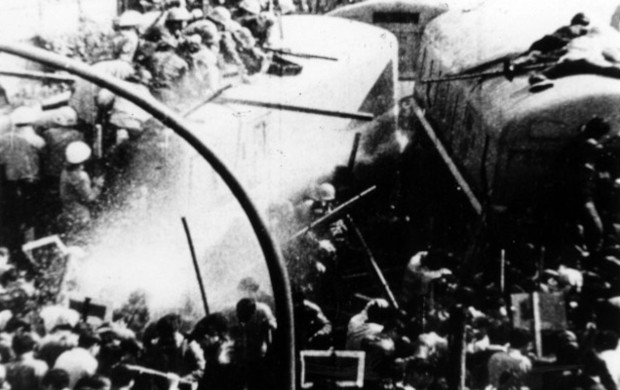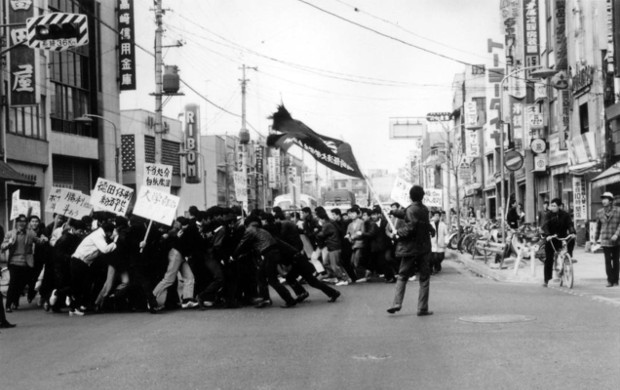Paruchizan zenshi
Prehistory of the Partisans
- 1969
- Japan
- 120 minutes
- Japanese
“Prehistory of the Partisans is worth re-discovery. . . . It remains one of the most extraordinary films about the ’68 movement, which took on quite a specific character in Japan with the noticeable rise of paramilitary student organisations. Noriaki Tsuchimoto (1928 – 2008) films this period “from the inside” with a 16mm camera and a microphone – not always synchronised as technology was still rudimentary in Japan at the time. Far from being just an onlooker, he is as active a protester as the students and professors he meets. . . . Tsuchimoto is in line with Shinsuke Ogawa’s idea of militant documentary made with and for the people.” – Adriano Aprá
- Production : Ryuiji Ichiyama, Hideko Kobayashi, Kansai Ogawa Pro
- Photography : Koshiro Otsu, Masashi Ichinose
- Sound : Yukio Kubota
- Editing : Noriaki Tsuchimoto, Takeaki Matsumoto
- Print contact : Athénée Français Cultural Center (email : takasaki@athenee.net)




